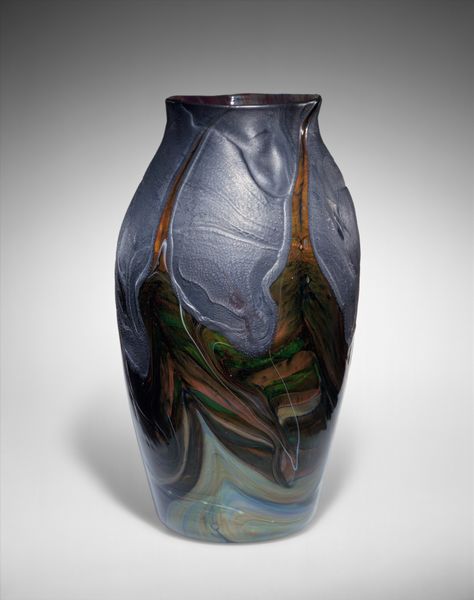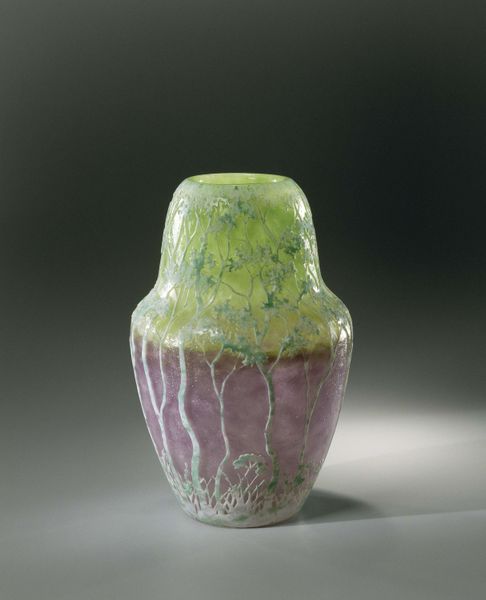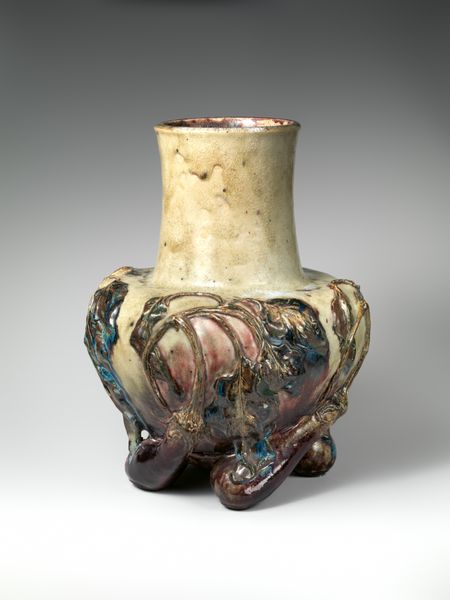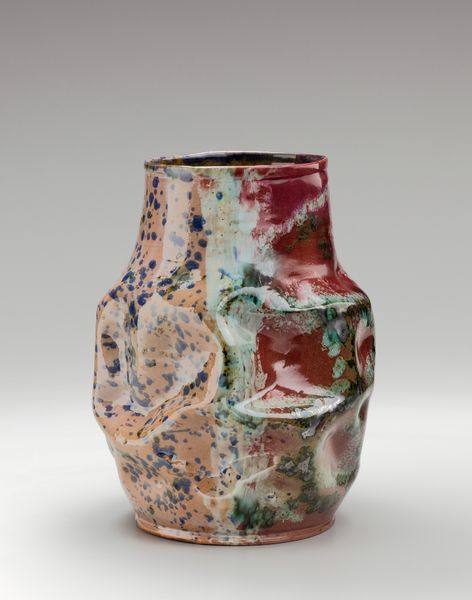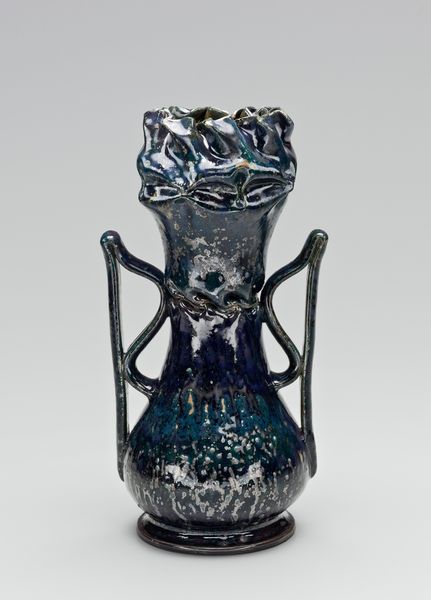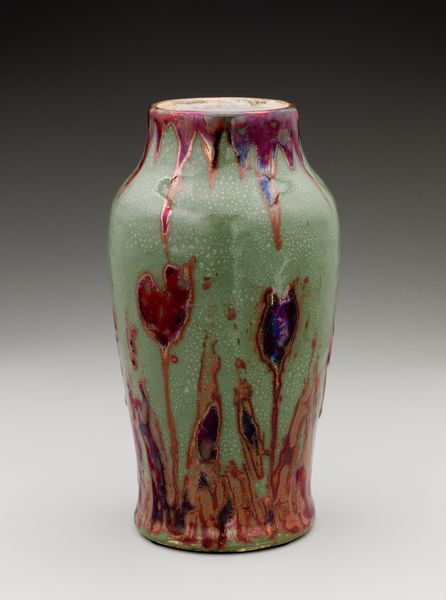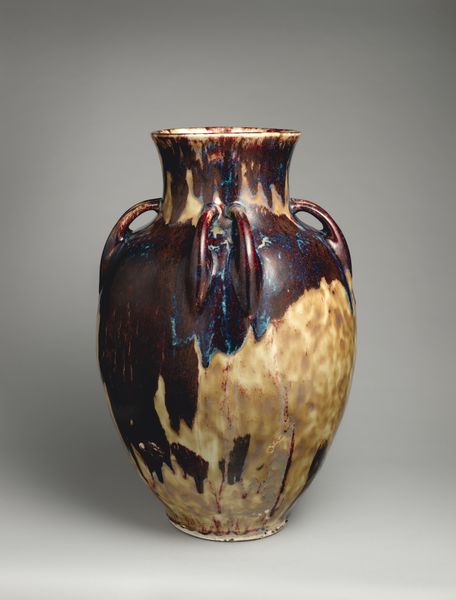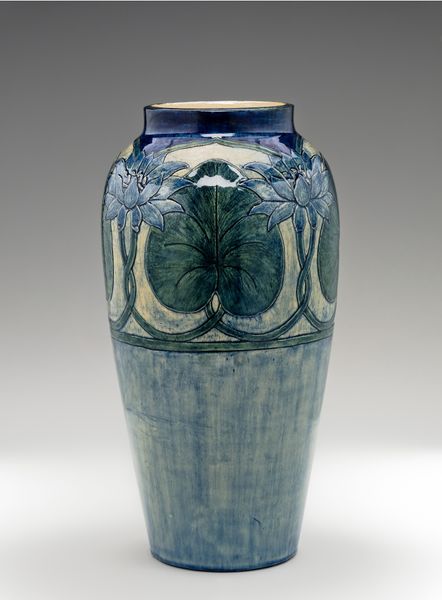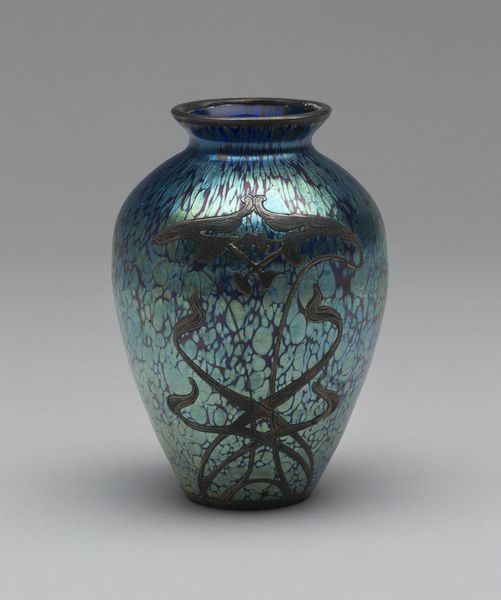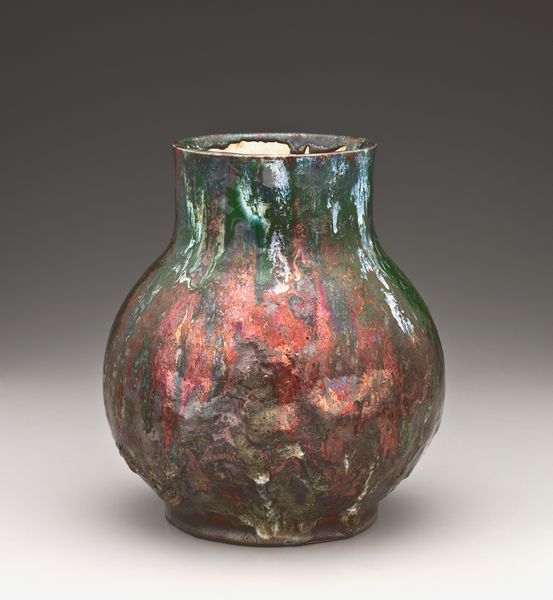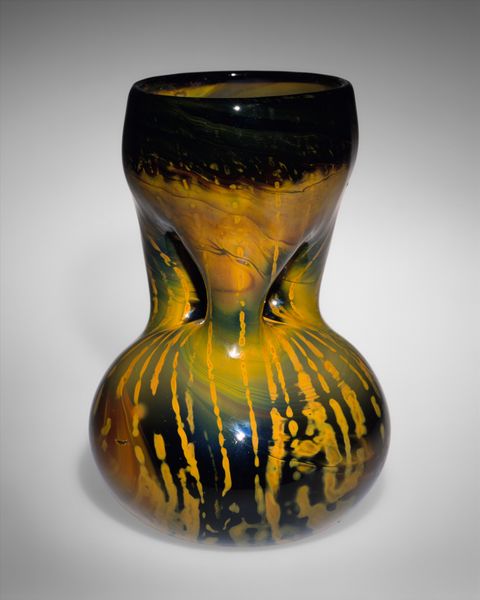
ceramic, earthenware, sculpture
#
ceramic
#
form
#
earthenware
#
geometric
#
sculpture
#
abstraction
Dimensions: 7 1/8 in. (18.1 cm)
Copyright: Public Domain
Curator: Well, that’s striking. This earthenware “Vase”, currently residing here at the Metropolitan Museum of Art, was produced sometime between 1893 and 1911 by Dedham Pottery. Editor: My immediate reaction is primal. The textured surface and deep greens evoke ancient forests, and yet, the drippy glaze feels almost volcanic. It's unsettlingly beautiful. Curator: That "volcanic" feel resonates. The high-fire technique characteristic of Dedham Pottery transformed commonplace clay into something altogether different, a merging of industry and raw natural power. We're talking about shaping earth, quite literally, under extreme conditions. Editor: Exactly. Thinking about the material process – the selection of the clay, the meticulous shaping, the layering of glaze and the transformative heat of the kiln, and then to use geometric pattern on its exterior, it is captivating how all these disparate factors combined. How was it circulated, who was it for, what were their motivations? Curator: These patterns often held meanings linked to specific locations or communities, becoming symbols of cultural identity or familial history within specific pottery traditions. The color, texture and patterns are signifiers which echo the values of home, family, and connection. Editor: But is it truly a "vase?" I see more sculpture than functional object, challenging the established art hierarchies of the period. Its rough, almost chaotic, surface goes against the smooth, idealized forms popular at the time. Was it considered more a commodity or craftwork, considering labor? Curator: I believe the lines blurred intentionally, between mass production and singular vision, between tradition and revolution. It forces us to confront not only how we perceive art, but what cultural memory it embodies and how. Editor: So, while its makers wrestled with their methods, it holds onto questions that resonate into the future: value, function, origin, meaning... not bad for a pot. Curator: It’s indeed a powerful reminder that objects can speak volumes about who we were, who we are, and who we aspire to be.
Comments
No comments
Be the first to comment and join the conversation on the ultimate creative platform.

